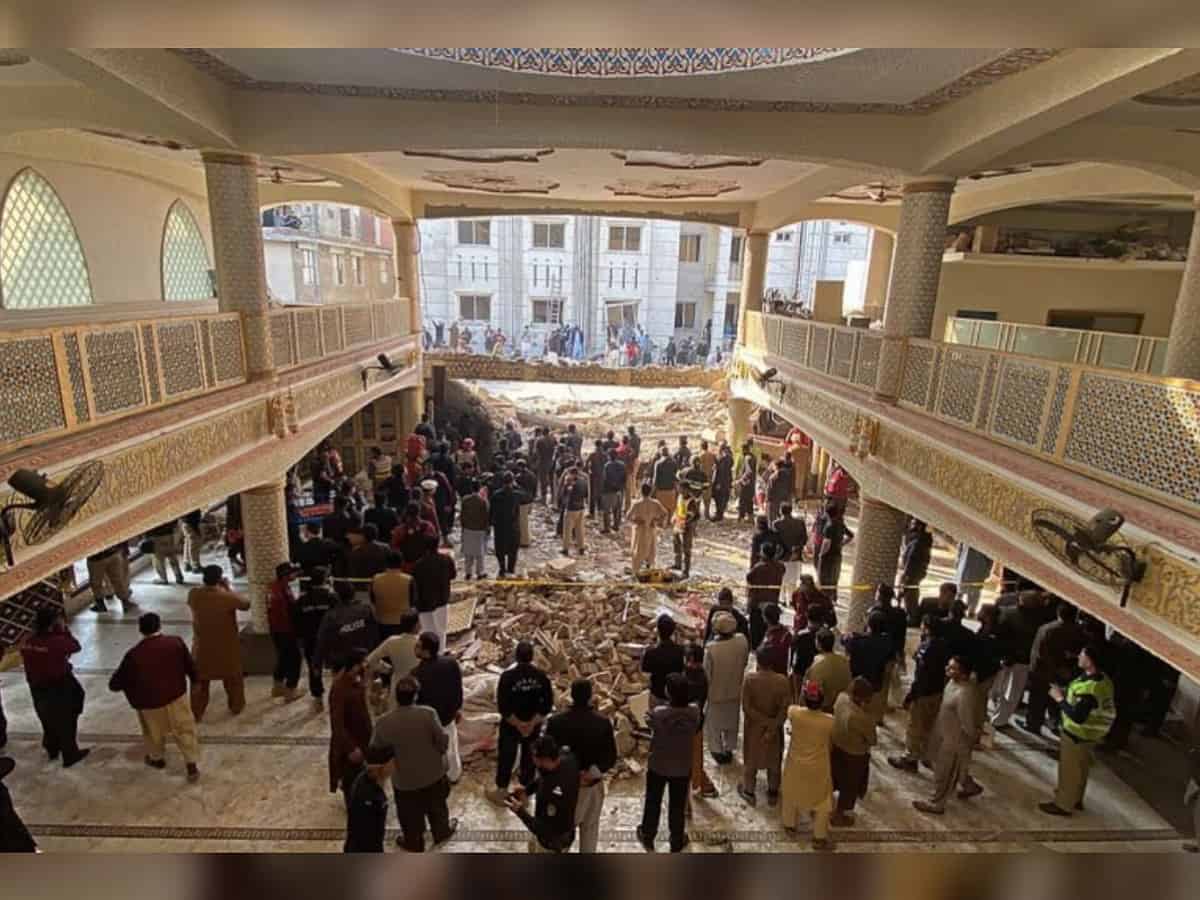
Peshawar: The January 31 suicide bombing at the sprawling mosque in Peshawar’s Malik Saad Shaheed Police Lines area was among the deadliest to hit this city.
Headquarters to capital city police and half a dozen other units including the frontier reserve police, the special security unit of the China-Pakistan Economic Corridor, the counter terrorism department, the elite force, telecommunication, rapid response force and special combat unit, it is no ordinary facility, Dawn reported.
With a single entry and exit point, where guards ask all visitors for identification and search their vehicles, it is a mystery how a suicide bomber managed to sneak in, and that too with explosives.
Investigators acknowledge it is not an easy case to solve.
With more than 2,000 staff working for the many units, and two to three hundred visitors daily, profiling each individual alongside reviewing hours of CCTV footage from the lone camera outside the mosque’s front gate and the compound, will be a time-consuming and painstaking task.
Equally difficult is collecting forensic evidence from underneath the debris of the collapsed roof that caused the most damage and casualties, Dawn reported.
A chapter of the banned Tehreek-i-Taliban Pakistan (TTP) from Mohmand, which accepted responsibility for the attack, described the bomber as 25-year-old Huzaifa — probably an organisational name given to an individual, like Ehsanullah Ehsan.
Police have so far recovered two heads from under the rubble, so mutilated that they could not be run through the Nadra database for positive identification.
Efforts are now on to reconstruct the faces and produce identikits, Dawn reported.
The high-walled compound is manned by police round the clock. It is difficult to get in without being questioned and asked for identity papers.
However, in the absence of a single command authority, six to eight police guards can barely cope with the task of searching and establishing the identities of the 2,000-plus staff and the hundreds of visitors that pass these gates every day.
“There was a security lapse,” acknowledged the Inspector General of Police, Moazzam Jah.
Senior police officials say that while there has been an alarming and disturbing increase in threat alerts of possible militant attacks in some key districts of Khyber Pakhtunkhwa, there was no specific threat from the intelligence agencies regarding the Police Lines compound, Dawn reported.
Investigators continue to pore over hours of video footage and check the personal profiles of thousands of employees to look for possible suspects.
There are also procedural questions: did the bomber walk in through the main gate; did he carry the explosives on him or was there someone inside the compound that helped him smuggle the explosives in beforehand. Intelligence and police sources speculate that the bomber couldn’t have pulled off such an audacious task without inside help, Dawn reported.
Soon after the bombing, TTP’s Mohmand chapter — formerly known as the Jamaatul Ahrar — claimed responsibility for the attack through its social media handles, saying that it was carried out to avenge the death of its leader, Umar Khalid Khurasani, who was killed in Afghanistan in August 2022, the fourth such revenge attack so far.
A little later, however, TTP Central issued a denial, insisting it was against its policy to attack mosques.
Investigators believe this was a distraction, since the militant commander who accepted responsibility for the bombing had only recently been appointed by TTP Central to head the Zhob Division (Wilayah in militants’ parlance) in Balochistan.
Amaq, a news agency linked to the Islamic State, also made its own claim of responsibility for the attack, Dawn reported.
Police and investigating agencies, however, see the TTP’s fingerprints on the attack.
Investigators believe that the militant groups that form the TTP enjoy operational independence, even if their actions are at variance with the organisation’s central policy guidelines.



